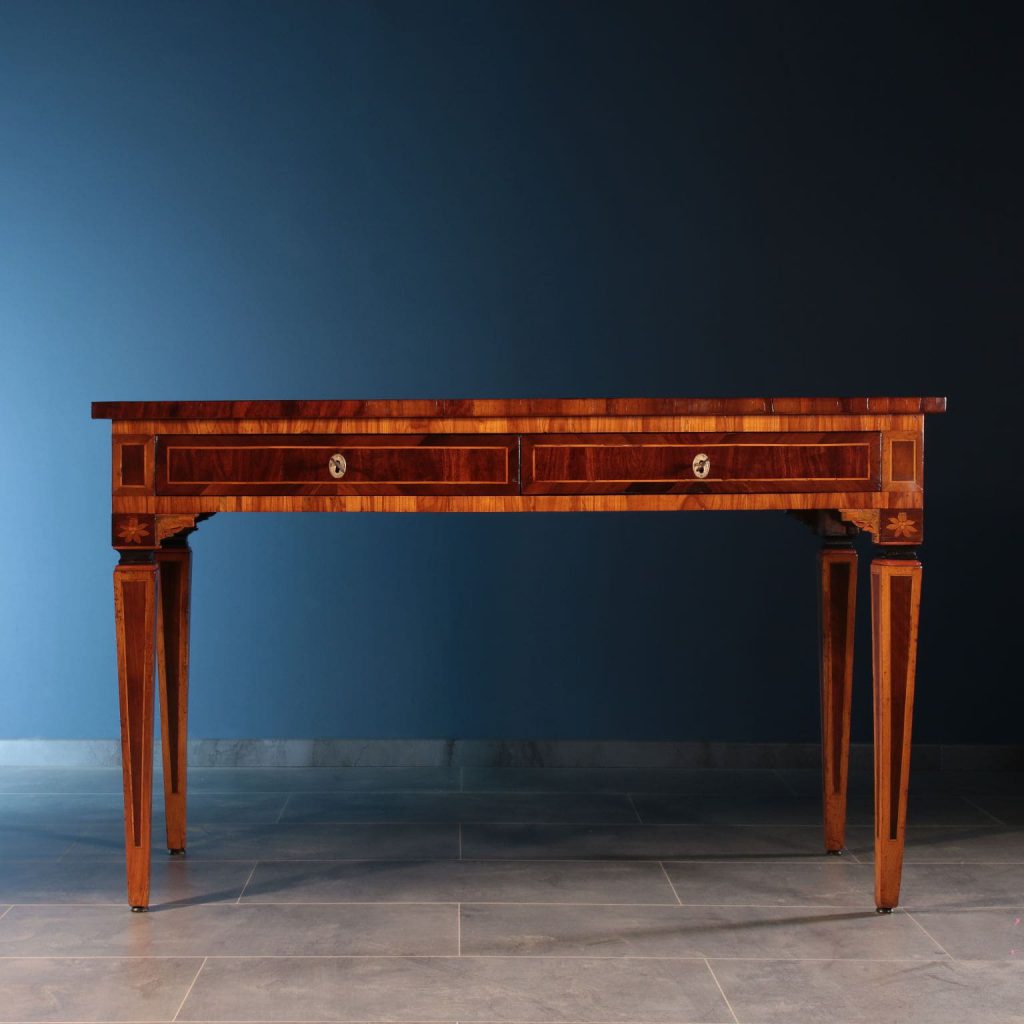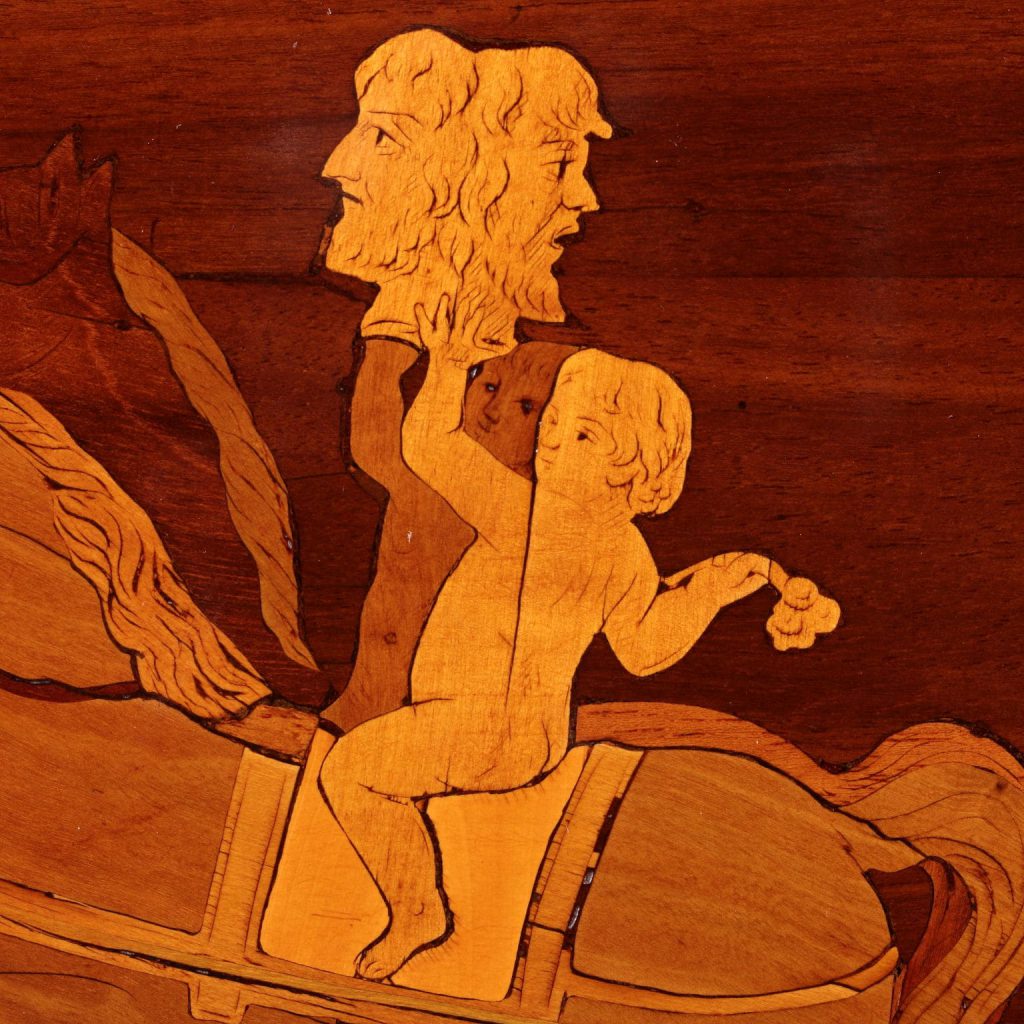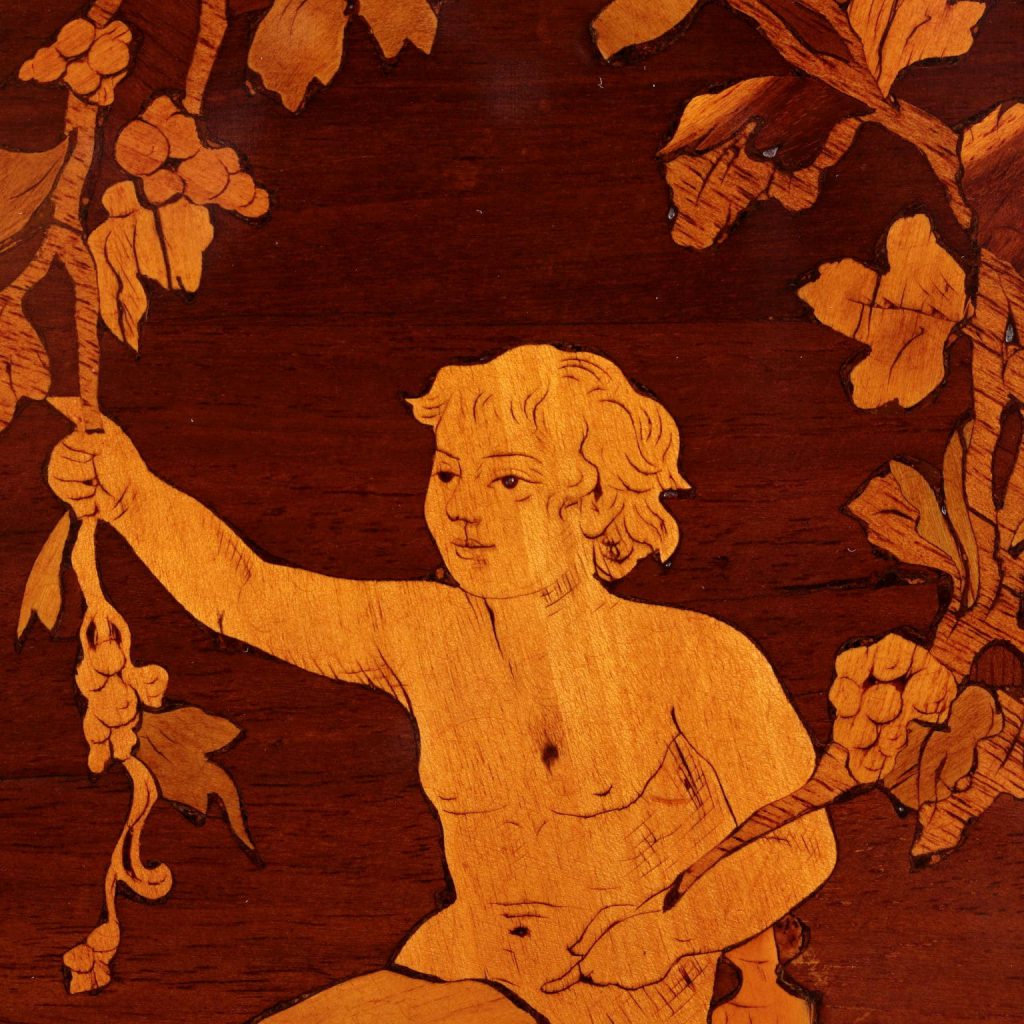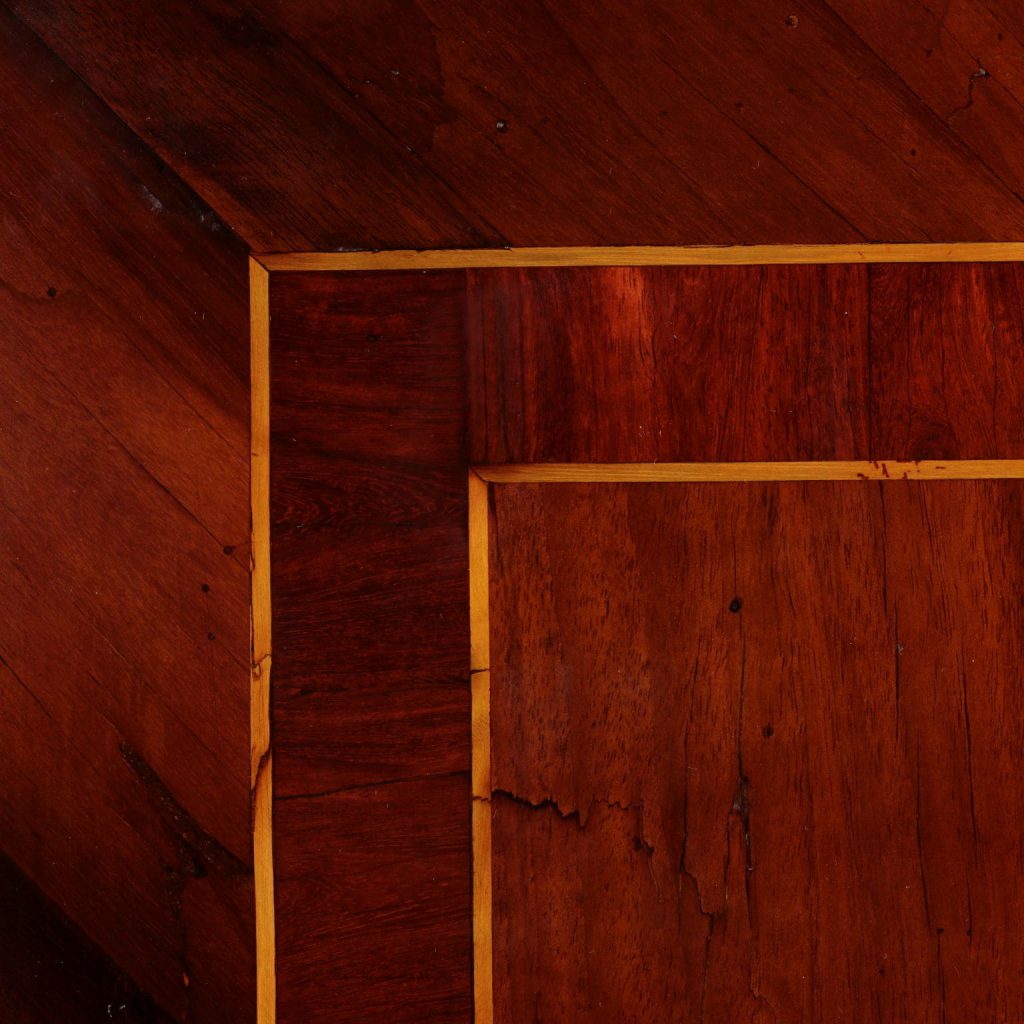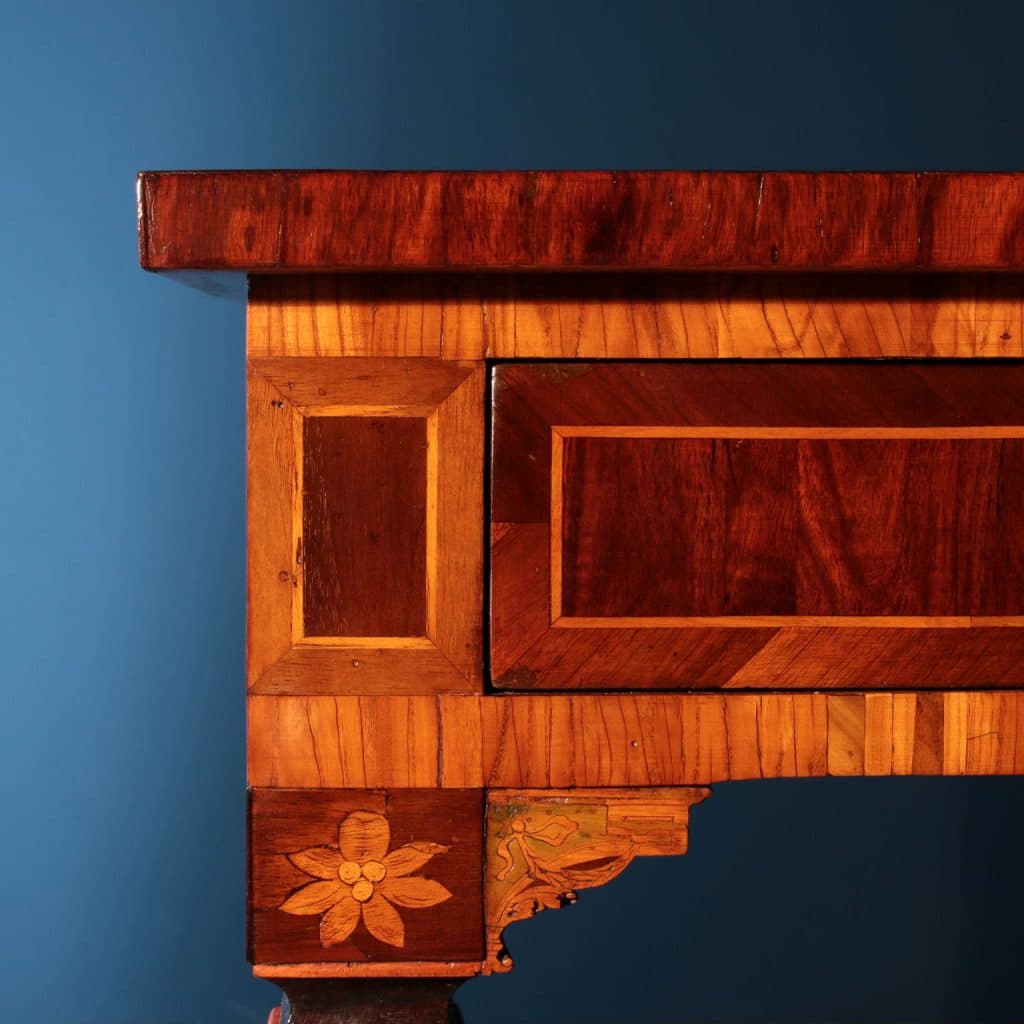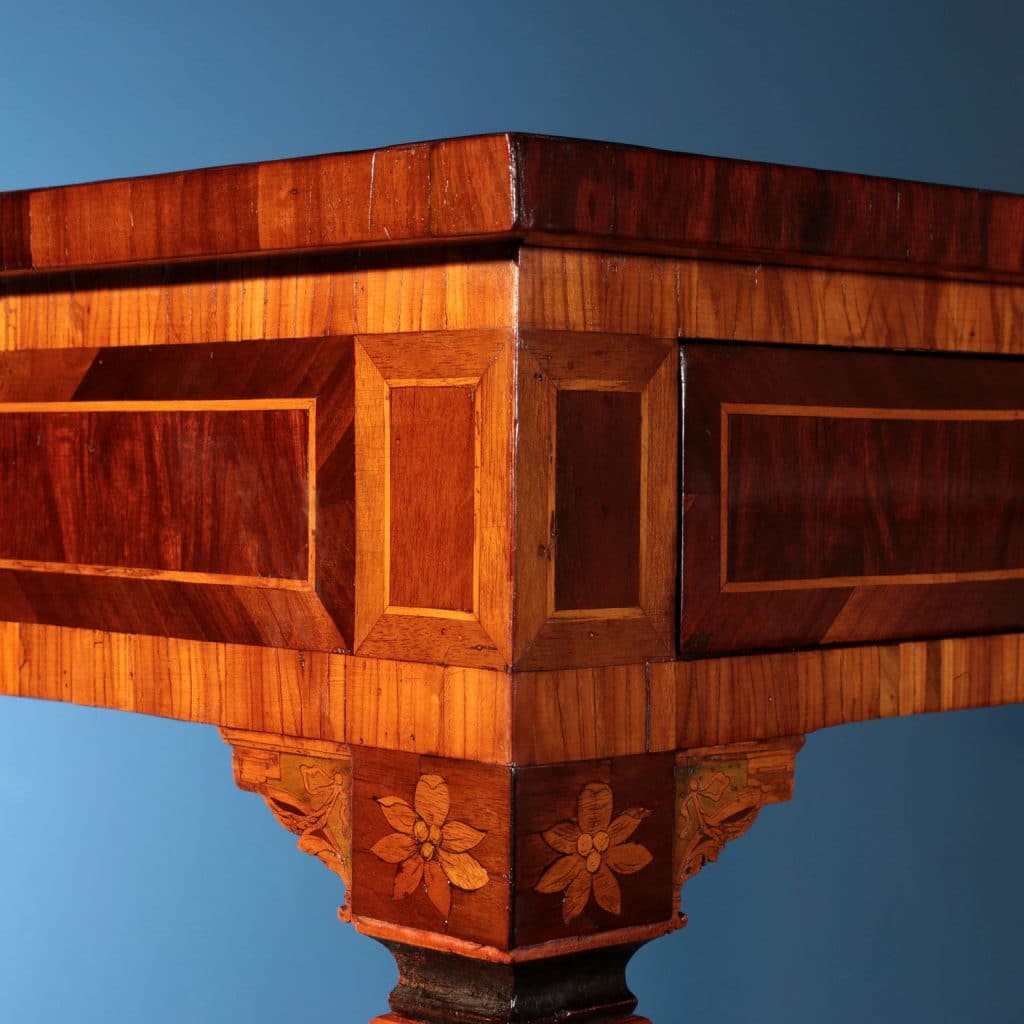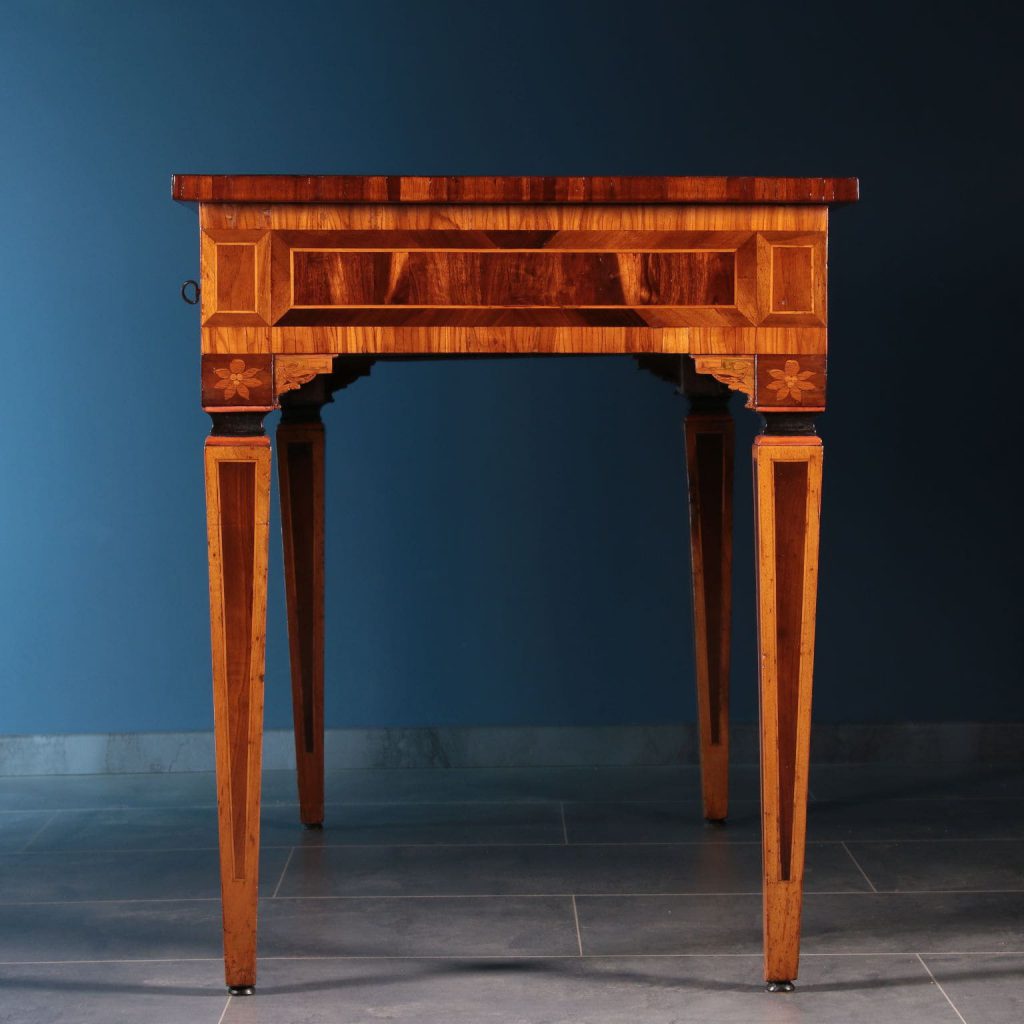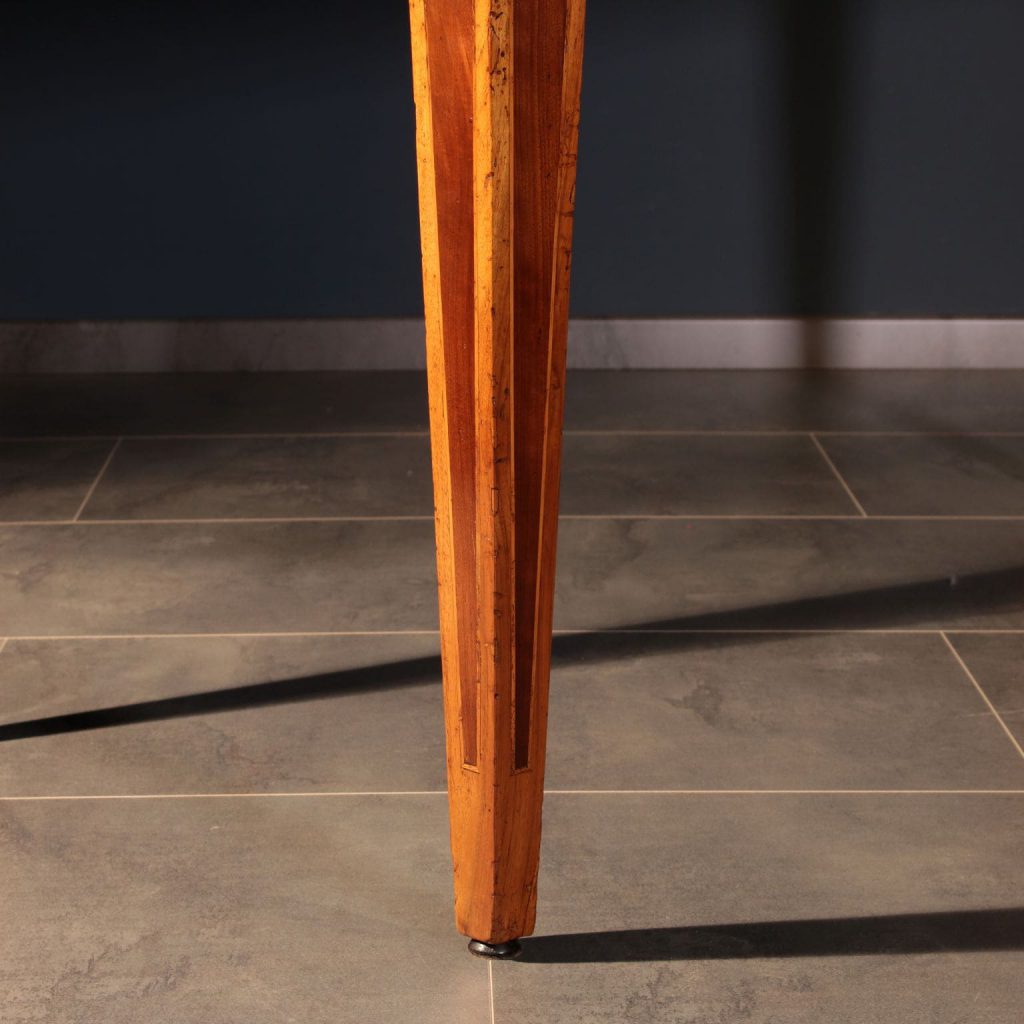Milan, early 19th century
Description:
Writing table veneered and inlaid in rosewood, bois de rose, walnut, maple, green stained maple and other woods. Finished on all four sides, it has two aligned drawers in one of the two long bands, shelves under the top connect the truncated pyramidal legs, the shelves are inlaid with Greek and festoon, a flower on the connection nut. On the mahogany-veneered top with threads we find in the center a large octagonal reserve inlaid with Bacchus on a chariot pulled by two horses each carrying a putto and accompanied by a faun.
Dimensions: 78.5 x 128.5 x 64.5 cm ( 30,9 x 50,6 x 25,4 in )
Historical-stylistic analysis:
The desk proposed here is one of the versions created by Antonio Mascarone, with all evidence comparable both to that published by Giuseppe Beretti and to that preserved in the Civic Collections of the Sforzesco Castle in Milan, published by Enrico Colle. It is known with certainty that Mascarone had a workshop in Cesano and that he came into contact with Maggiolini’s workshop, of which he may even have been a pupil.
Thanks to some of his signed works, it was possible to recognize other pieces of furniture that were made in an unmistakable way by the same hand, often confirmed by the repetition of the same inlay motifs. This cabinetmaker, like Giovan Battista Maroni, sometimes signs in full, but most of the time affixes his own monogram AMF. The most obvious comparison is the secrétaire published by Alvar González-Palacios, which bears the signature in the central medallion of the door, where, moreover, a “Bacchus on a chariot drawn by two horses with a putto each accompanied by a faun ”, a motif identical to the one inlaid on the top of this desk.
This table and the two published, are absolutely correspondent also in the construction part and in the type of wood used (rosewood, bois de rose, walnut, mahogany, maple, green stained maple and other woods); the strangled collar that separates the leg from the nut with which it connects to the band is singular, it is in shaped walnut and dyed black and red in our table as well as in the one made for the Reggia di Monza.
Two chest of drawers are then known in a private collection, dated 1802 (probably a wedding gift), evidently the work of Antonio Mascarone who, on these furniture, as well as in the secrétaire of Palazzo Bianco, carries phrases on the theme of the commissioning of the furniture. On one of these, in fact, it is reported “Conjugal Concord 1802 … F.”, While on the other “ficem uxoriam”.
All these indications lead us to identify Antonio Mascarone di Cesano as an artisan, at the head of a shop dedicated to the creation of furniture for the Milanese and Lombard bourgeoisie of those years, based on the production of the more famous Giuseppe Maggiolini, but characterized by a evident decorative simplification.
Reference bibliography:
– Alvar Gonzàlez-Palacios, Il tempio del gusto, ed. Longanesi, 1984;
– Clelia Alberici, Daniela Cuomo, Sandra Lebboroni, G. Villani, Civiltà del Legno, ed. SAGEP, 1985;
– Enrico Colle, Museo d’Arti Applicate, ed. Electa, 1996;
– Giuseppe Beretti, Laboratorio, ed. In Limine, 2005;
– Enrico Sala, Maggiolini & Co., ed. Anticonline, 2020.
- Stone sample table, Rome, Opificio Raffaelli

Antiques, Art and Design
FineArt is the new ambitious Di Mano in Mano project that offers an exclusive choice of antiques and design works, presenting them for their singularity and uniqueness.


